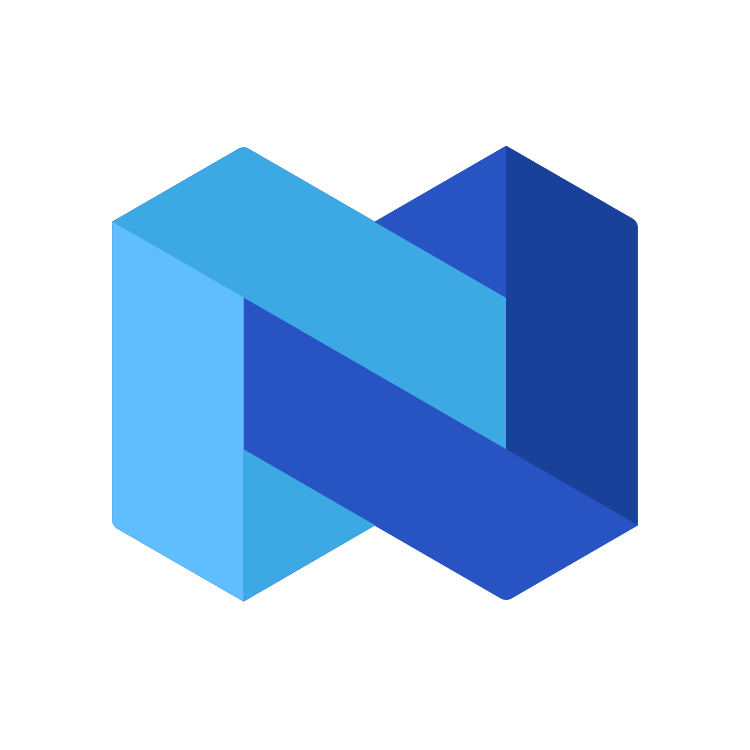The Role of $OBOL in the Future of Decentralized Finance (DeFi
)
The rise of Decentralized Finance (DeFi) has dramatically reshaped the landscape of the cryptocurrency and blockchain industries. DeFi leverages blockchain technology to create open, permissionless financial services without the need for intermediaries like banks or traditional financial institutions. As the DeFi ecosystem continues to grow, tokens like $OBOL have the potential to play a significant role in its development, offering a range of benefits and use cases for participants in this decentralized financial system.
This analysis will explore the role of $OBOL in the future of DeFi, discussing its current place in the ecosystem, its potential use cases, and the opportunities and challenges it faces as the DeFi landscape continues to evolve.
---
1. Introduction to Decentralized Finance (DeFi)
DeFi refers to a set of financial services built on blockchain technology that operates without intermediaries. These services include lending and borrowing, decentralized exchanges (DEXs), yield farming, and more. The core principle of DeFi is that users maintain control of their funds through self-custody and smart contracts, and all transactions are processed in a decentralized manner, typically on Ethereum and other blockchains that support smart contracts.
The DeFi sector has experienced exponential growth, with its total value locked (TVL) reaching billions of dollars. The introduction of tokens like $OBOL can enhance the functionality of this ecosystem, enabling more efficient, cost-effective, and secure decentralized financial services.
---
2. How $OBOL Fits Within the DeFi Ecosystem
For $OBOL to be a meaningful participant in the DeFi space, it must fit into key areas of the ecosystem. $OBOL can play multiple roles, including serving as a governance token, a medium of exchange, or a collateral asset in DeFi protocols.
a. Governance and Decentralized Decision-Making
Many DeFi platforms use governance tokens to allow holders to vote on key protocol decisions, such as changes to interest rates, new features, or updates to the smart contract code. If $OBOL is used as a governance token, its holders could have a say in the future development of DeFi protocols and applications.
Example: $OBOL holders might vote on whether a DeFi protocol should implement new lending features or modify transaction fees. By enabling decentralized decision-making, $OBOL could help foster a more community-driven ecosystem.
b. Medium of Exchange
$OBOL can serve as a medium of exchange on DeFi platforms, allowing users to transact seamlessly within the ecosystem. As the DeFi space grows, the demand for tokens that can be used across different applications will rise, making $OBOL a useful tool for executing transactions, paying for fees, and transferring value.
Example: Users could exchange $OBOL for other tokens or assets on decentralized exchanges (DEXs) or use it to pay for transaction fees within DeFi protocols.
c. Collateral for Loans and Borrowing
In many DeFi platforms, users can collateralize their assets to borrow funds or provide liquidity to lending protocols. $OBOL could be used as collateral, allowing holders to take out loans without needing to liquidate their position. This use case provides liquidity to the DeFi ecosystem while allowing users to maintain exposure to the token’s price movements.
Example: A user could lock their $OBOL in a lending protocol like Aave or MakerDAO and borrow a stablecoin or another cryptocurrency without selling their $OBOL holdings.
---
3. Key Components of DeFi That $OBOL Can Enhance
To fully understand the role of $OBOL in DeFi, it is important to recognize the key components of the DeFi ecosystem and how $OBOL can add value to these areas.
a. Decentralized Exchanges (DEXs)
DEXs are platforms that allow users to trade cryptocurrencies directly with one another without the need for an intermediary. $OBOL could be used as a base trading pair or liquidity pool asset on DEXs like Uniswap, SushiSwap, or PancakeSwap.
Example: Users could trade $OBOL directly against other cryptocurrencies or provide liquidity to $OBOL/ETH or $OBOL/USDT pools, earning fees from trades in the process.
b. Yield Farming and Staking
Yield farming is a popular DeFi activity where users lock their tokens in a protocol to earn rewards in the form of additional tokens. Similarly, staking involves locking tokens to participate in a network and earn rewards. $OBOL could be used in both yield farming and staking programs, offering holders a way to earn passive income.
Example: By staking $OBOL in a DeFi protocol, users could earn a return in the form of more $OBOL or another asset, contributing to the liquidity of the platform and benefiting from compounding rewards.
c. Lending and Borrowing Protocols
Lending platforms like Compound and Aave allow users to lend their assets and earn interest, or borrow assets by providing collateral. $OBOL could play a role in these platforms as either a collateral asset or a lending token, expanding the DeFi ecosystem’s reach.
Example: A user could lend $OBOL to others within a lending protocol and earn interest, or use $OBOL as collateral to borrow stablecoins.
---
4. Advantages of $OBOL in DeFi
The integration of $OBOL into the DeFi ecosystem can bring several advantages to users and developers:
a. Lower Transaction Fees
One of the main benefits of using $OBOL within the DeFi ecosystem is the potential for lower transaction fees. Many DeFi platforms, particularly on Ethereum, suffer from high gas fees during periods of network congestion. If $OBOL is built on a more scalable blockchain or has optimized transaction protocols, it can offer a more affordable way for users to transact and interact with DeFi platforms.
b. Faster Transactions
In high-traffic DeFi environments, transaction speed is crucial. By utilizing a blockchain with high throughput, $OBOL can enable faster transaction confirmations, providing a better user experience on decentralized applications (dApps).
c. Enhanced Privacy and Security
Blockchain technology is inherently secure, and DeFi platforms using $OBOL can benefit from the token’s built-in security features. Additionally, $OBOL could be designed with privacy-focused features, such as transaction obfuscation or zero-knowledge proofs, to enhance user privacy while transacting within DeFi protocols.
---
5. Risks and Challenges for $OBOL in DeFi
Despite its potential, $OBOL faces several risks and challenges when it comes to DeFi adoption and long-term success.
a. Security Concerns
DeFi platforms have been plagued by hacking and vulnerabilities, especially in smart contracts. If $OBOL is integrated into these platforms, it could be exposed to risks such as smart contract bugs, flash loan attacks, or other exploits. Ensuring that the smart contracts related to $OBOL are thoroughly audited and secure is crucial to its success.
b. Regulatory Issues
The regulatory landscape for DeFi is still evolving, and governments around the world are starting to take a closer look at decentralized financial services. If governments impose stricter regulations on DeFi platforms or the use of $OBOL within these platforms, it could limit its adoption and use.
c. Liquidity and Market Adoption
For $OBOL to succeed in DeFi, it needs to gain sufficient liquidity and market adoption. Without enough users, liquidity providers, and developers building on top of $OBOL, its utility could be limited. The success of $OBOL will depend heavily on building a strong community and attracting developers to create DeFi applications that utilize the token.
---
6. Future Prospects for $OBOL in DeFi
The future of $OBOL in DeFi looks promising, especially as the DeFi ecosystem continues to grow and mature. With the potential for use cases across lending, trading, and staking, $OBOL could become a vital component of the decentralized financial landscape.
Key factors that will influence the future of $OBOL in DeFi include:
The development of scalable and low-fee platforms that can accommodate a high volume of DeFi transactions.
Partnerships and integrations with established DeFi protocols and liquidity pools to increase adoption.
Community-driven governance to ensure that $OBOL remains aligned with the evolving needs of DeFi participants.
---
7. Conclusion: $OBOL's Role in the Future of DeFi
As the DeFi space continues to expand, $OBOL has the potential to be a significant player in this new financial ecosystem. Whether as a governance token, a medium of exchange, or collateral, $OBOL can provide the liquidity, security, and efficiency required for the next generation of decentralized financial services.
By addressing key challenges such as security, liquidity, and regulatory uncertainty, $OBOL can carve out a meaningful place within the DeFi space, helping to shape the future of finance in a decentralized, permissionless world.

$PI Network will take part in Consensus 2025 , one of the largest international crypto events, held in Toronto from May 14 to 16. The event, organized by CoinDesk, will host over 6,800 companies, 400 startups, and attendees from more than 100 countries.
The Pi Core Team is set to showcase its Open Mainnet, which launched in February 2025. According to official Pi Network materials , the project has surpassed 55 million users globally. Thousands of decentralized applications now operate on the network, built using its mobile-first architecture.
Dr. Nicolas Kokkalis, the Pi Network founder, is scheduled to speak at the event. This will be the platform’s first official presentation at a global blockchain conference. His session is expected to provide technical details on Pi Network’s infrastructure and its approach to decentralized access.
Pi Network’s Presence Aligns With Industry-Scale Engagement
The event’s scale creates opportunities for Pi Network to engage with infrastructure providers, developers, and institutional backers. While no funding announcements have been confirmed, the structure of Consensus 2025 allows discussions with key investors, product teams, and platform builders.
The Pi Core Team will use the event to provide updates on its developer tools and ecosystem support. Project representatives are also expected to join several technical forums where open blockchain platforms and mobile-first networks will be discussed.
The project’s official roadmap, developer programs, and Mainnet status will guide its discussions during the event.



 最低価格
最低価格 最高価格
最高価格 

















































![BitTorrent [New]](https://img.bgstatic.com/multiLang/coinPriceLogo/c87b5c29752b2123cca40f4dd2c6b6501710522527061.png)














Coreのソーシャルデータ
直近24時間では、Coreのソーシャルメディアセンチメントスコアは4で、Coreの価格トレンドに対するソーシャルメディアセンチメントは強気でした。全体的なCoreのソーシャルメディアスコアは496で、全暗号資産の中で144にランクされました。
LunarCrushによると、過去24時間で、暗号資産は合計1,058,120回ソーシャルメディア上で言及され、Coreは0.01%の頻度比率で言及され、全暗号資産の中で335にランクされました。
過去24時間で、合計496人のユニークユーザーがCoreについて議論し、Coreの言及は合計140件です。しかし、前の24時間と比較すると、ユニークユーザー数は減少で11%、言及総数は増加で180%増加しています。
X(Twitter)では、過去24時間に合計2件のCoreに言及したポストがありました。その中で、100%はCoreに強気、0%はCoreに弱気、0%はCoreに中立です。
Redditでは、過去24時間にCoreに言及した2件の投稿がありました。直近の24時間と比較して、Coreの言及数が50%減少しました。
すべてのソーシャル概要
4